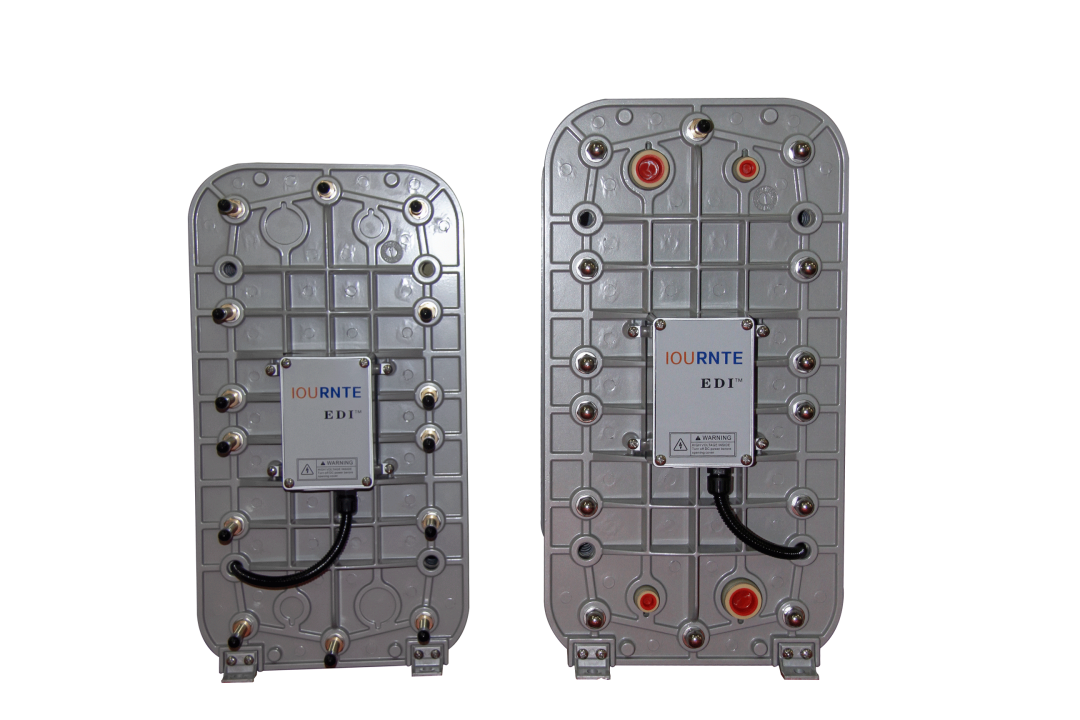Pure water refers to pure water, which generally uses urban tap water as the water source. Through multi-layer filtration, harmful substances such as microorganisms can be removed, but at the same time minerals needed by the human body such as fluorine, potassium, calcium, and magnesium are also removed. - Ozone sterilization ultrapure water treatment
The disinfection principle of ozone (O3) is: the molecular structure of ozone is unstable at normal temperature and normal pressure, and it will quickly decompose into oxygen (O2) and a single oxygen atom (O); the latter has strong activity and is extremely harmful to bacteria. Strong oxidation, kill it, and the excess oxygen atoms will recombine into ordinary oxygen atoms (O2) without any toxic residues, so it is called a non-polluting disinfectant. It is not only effective against various bacteria (including hepatitis Viruses, Escherichia coli, Pseudomonas aeruginosa and miscellaneous bacteria, etc.) have a strong ability to kill, and are also very effective against cidamicin. 1. The sterilization mechanism and process of ozone belongs to the biochemical process, which oxidizes and decomposes the glucose oxidase necessary for the oxidation of glucose inside the bacteria. 2. Directly interact with bacteria and viruses, destroy their organelles and ribonucleic acid, decompose macromolecular polymers such as DNA, RNA, proteins, lipids and polysaccharides, and destroy the metabolic production and reproduction process of bacteria. 3. Penetrate the cell membrane tissue, invade the cell membrane and act on the lipoprotein of the outer membrane and the lipopolysaccharide inside, causing the cells to be permeable and deformed, resulting in cell lysis and death. And the genetic genes, parasitic bacteria, parasitic virus particles, bacteriophage, mycoplasma and pyrogens (bacterial virus metabolites, endotoxins) in the dead bacteria are dissolved, denatured and destroyed.

- Activated carbon adsorption pure water treatment process
Activated carbon relies on adsorption and filtration to mainly remove organic impurities such as color, odor, residual chlorine, and residual disinfection in water. - Membrane microfiltration (MF) pure water treatment process
Membrane microfiltration includes three forms: depth filtration, screen filtration, and surface filtration. Depth filtration is a matrix made of woven fibers or compressed materials, using inert adsorption or capture methods to retain particles, such as commonly used multimedia filtration or sand filtration; depth filtration is a more economical method that can remove 98 % of suspended solids, while protecting the downstream purification unit from being blocked, so it is usually used as pretreatment. Surface filtration is a multi-layer structure. When the solution passes through the Membrane Element, particles larger than the internal pores of the filter membrane will be retained and mainly accumulated on the surface of the filter membrane, such as the commonly used PP fiber filter. Surface filtration can remove more than 99.9% of suspended solids, so it can also be used for pretreatment or clarification. The sieve filter membrane basically has a consistent structure, just like a sieve, leaving particles larger than the pore size on the surface (the pore size of this filter membrane is very accurate), such as the terminal use of ultrapure water machines Point-of-use security filter; screen filter microporous filter is generally placed at the end-use point of the purification system to remove residual traces of Resin chips, carbon dust, colloids and microorganisms. - Ion exchange pure water treatment process
The principle of the ion exchange method is to exchange inorganic salt anions and cations in water such as calcium ion Ca2+, magnesium ion Mg2+, sulfate SO42-, nitrate NO3-, etc. Anion and cation phase exchange, so that the water is purified. - Reverse osmosis (RO) pure water treatment process
It is a material separation process in which pure water is extracted from water containing various inorganic substances, organic substances, and microorganisms, using pressure as the driving force, using the selectivity of Reverse Osmosis Membrane that can only permeate water but not solutes. The pore size of the reverse osmosis membrane is less than 10 angstroms (1 angstrom is equal to 10-10 meters), and it has a strong screening effect. Its desalination rate is as high as 99%, and the sterilization rate is greater than 99.5%. It can remove inorganic salts, sugars, amino acids, bacteria, viruses and other impurities in water. If the raw water quality and product water quality are used as the benchmark, RO is an economical and effective method for purifying tap water after proper design, and it is also a good pretreatment method for ultrapure water systems. - Ultrafiltration (UF) pure water treatment process
The microporous membrane removes particles according to the size of the filter aperture, while the ultrafiltration (UF) membrane is like a molecular sieve, which uses the size as the basis to allow the solution to pass through extremely fine pores to achieve the purpose of separating molecules of different sizes in the solution . Ultrafiltration membrane is a strong, thin, and selective permeable membrane. It is generally considered that its filtration pore size is about 0.01 μm, and it can retain molecules above a certain size, including: colloids, microorganisms, and heat sources. Smaller molecules, such as water and ions, pass through the membrane.
- Ultraviolet (UV), ozone sterilization ultrapure water treatment process
The 254nm/185nm ultraviolet rays emitted by the ultraviolet lamp can effectively kill bacteria and degrade organic matter. - EDI pure water treatment process
A new deionized water treatment method. Also known as continuous electric desalination technology, the EDI device fills the Ion Exchange Resin between the anion and cation exchange membranes to form an EDI unit. This method does not need to regenerate the resin with acid and alkali, and has good environmental protection. 




